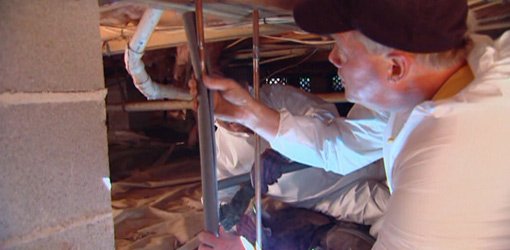
Burst pipes can be a costly mess of things. Sometimes, the problems arise from poor maintenance practices especially during the very cold days when the pipes freeze over. Below are six things can help protect the plumbing from freezing and thaw frozen pipes.
- Leave the thermostat temperature settings not lower than 55 degrees when you at planning for an extended stay away from your home.
- Let the faucet drip; it helps to relieve the pressure in the plumbing.
- Leave the interior door open to all heat to circulate throughout the house, and this will help prevent the pipes from freezing.
- Check for and seal any holes or cracks outside and inside the home that may allow cold air to reach the plumbing.
- Applying a special electric tape directly to pipes that are exposed to the elements will help protect them from freezing temperatures.
- Fibreglass sleeves and foam rubber are some of the viable insulation options worth adding to directly to the pipes to guard them against the extremely chilly weather. The insulation is an ideal option for pipes in the basement and the attic.
With the idea of leaving a faucet dripping, you also should account for the need for conversing water. Therefore, you should leave a tap located at the furthest end of the water system to allow water to travel the whole system and relief the pressure; it should be a cold water faucet.
This is also important to consider after you buy your new kitchen from kitchen shops.
Besides the six tips mentioned above, below are other measures that you can take to ensure that your pipes do not get frozen.
- Detach the hoses from the outdoor taps, drain them, and then store them; make sure the interior valves that supply water to the outdoor hose bibs are closed. Leave the outside valve open to inhibit any restrictions when the water left in the pipes expands; it prevents the pipes from breaking.
- Use pipe-sleeves if you do not have any heat tapes to insulate exposed water pipes. You can get the sleeves from the home repair stores. Newspapers can also be used to wrap the plumbing though it does require an adequate amount of paper and a layering technique for it to work efficiently.
- Check if the water supply lines, especially in unheated areas such as the basement and crawl spaces, are well insulated. Also, look in the garage, the attic, and other areas such as the under the kitchen cabinets and bathroom cabinet to ensure that the cold water and hot water pipes are well insulated.
- The garage door should remain closed if there are pipes that are running in the garage.
- If the weather is freezing outside, allow the cold water faucet served by exposed piping to drip. The trickling water helps to prevent the water from freezing.
- Try to keep the room temperature warm by having the same temperature settings during the day and night.
- You may have a frozen pipe if you find no water running when you open the tap. You should leave the faucet open and call a plumber. If you have a burst pipe, then shut off the main water supply valve and leave the taps open and then proceed to call a plumber to fix the problem.
How to Thaw Frozen Pipes

If you have frozen plumbing, below are some of the things you can do to thaw the pipes.
- If you are dealing with a frozen pipe, you should check and confirm that entire plumbing in your home is not frozen, but just that one case.
- Open the faucets as you treat the frozen pipes so that you can speed up the defrosting process. It also allows water to flow through the frozen pipes which speed up the melting of the ice.
- Seal all gaps or cracks in and around the building that allow cold air in, pay more attention to areas where there are pipes. Also, see what you can do about the dryer vents and spaces where there is electrical wiring.
- Use electric heating pads to defrost the pipes. Wrap the pads around the piping and ensure the faucets at the end of the pipes are open. You can also use portable space heaters or hair dryers to thaw the pipes. Soaking towels in hot water and wrapping them around the piping can also work. Avoid using extreme measures such as open flames from a propane heater, a blowtorch, or a charcoal stove to melt the ice in the pipes.
- Use a consistent heat when thawing the pipes, do this until the ice is completely melted and water pressure is fully restored. Call an experienced plumber to help if the frozen section is inaccessible and you cannot thaw the plumbing.
